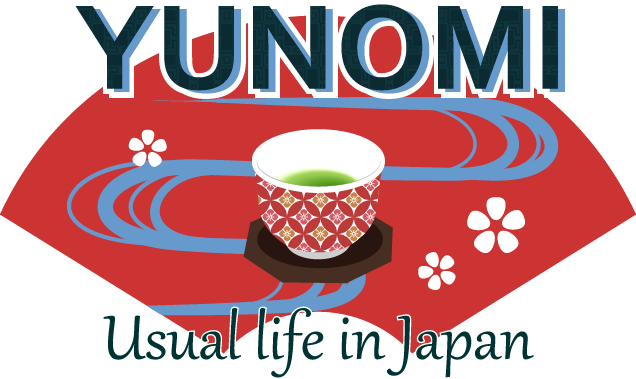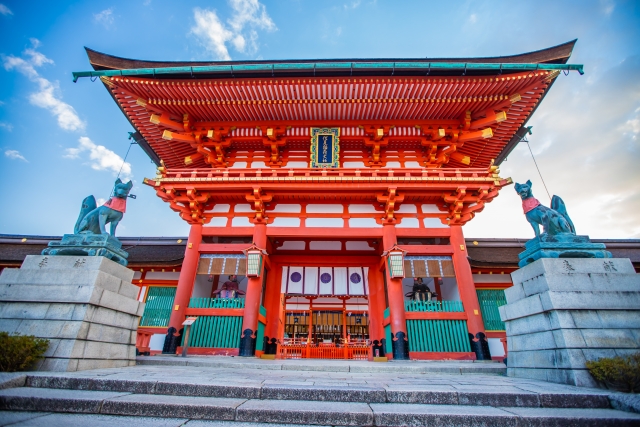If you travel around Japan, you’ll quickly notice something curious.
In big cities and quiet countryside alike, small shrines guarded by pairs of fox statues appear almost everywhere.
Their bright red torii gates stand out against green trees, and the foxes seem to stare right at you.
Why are there so many foxes in Japanese shrines?
Are these foxes gods?
The short answer: not exactly.
The fox is not the god itself — it’s the messenger of a god called Inari.
🏮 What Is “Inari”?

“Inari” (稲荷) is one of Japan’s most beloved deities.
Originally, Inari was the Shinto god of rice and agriculture, worshiped to ensure good harvests and prosperity.
Over time, as Japan modernized, this belief expanded — Inari also came to represent business success, household safety, and good fortune.
That’s why today, you can find more than 30,000 Inari shrines across Japan — from Kyoto’s famous Fushimi Inari Taisha to tiny shrines tucked between city buildings.
🦊 Why the Fox?
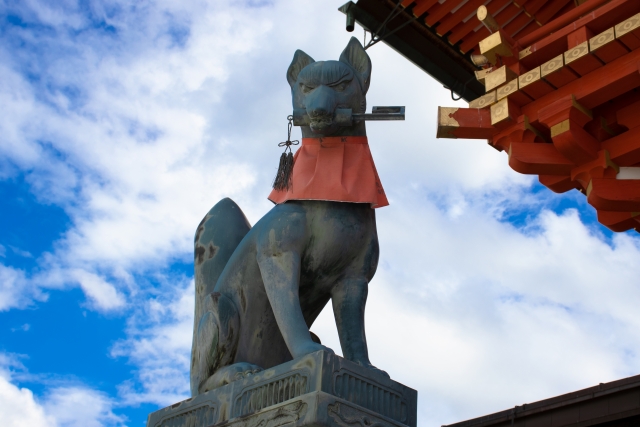
In ancient Japan, farmers noticed that foxes often lived near rice fields.
They hunted mice — the biggest threat to stored rice — and so people began to see foxes as protectors of the harvest.
When Inari became the deity of rice, the fox naturally took the role of Inari’s sacred messenger.
In Japanese shrines, these divine messengers are called shinshi (神使) — beings who serve the gods and carry their will to humans.
That’s why at every Inari shrine, you’ll find fox statues guarding the entrance, often holding a key (to the rice granary) or a jewel (symbolizing divine power) in their mouths.
🗾 Not All Inari Shrines Are the Same
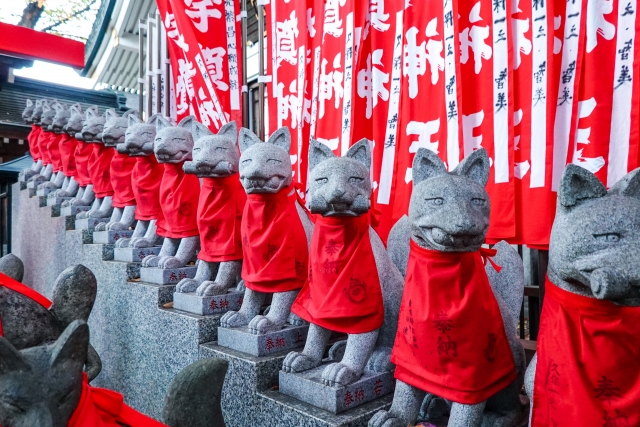
While the fox statues look similar, each region has its own interpretation of Inari.
-
Fushimi Inari Taisha (Kyoto) — The spiritual head of all Inari shrines, dedicated to Ukanomitama-no-kami, the god of grain.
-
Toyokawa Inari (Aichi) — A Buddhist-style Inari, worshiping Dakini-shinten, a guardian goddess riding a white fox.
-
Kasama Inari (Ibaraki) — One of the three great Inari shrines in eastern Japan, known for blending agriculture and commerce.
-
Yūtoku Inari (Saga) — Famous for its vivid red architecture and its connection to beauty and love.
So, not all fox shrines belong to the same belief system — some are Shinto, others are Buddhist, and many are a blend of both.
This mix of traditions is part of what makes Japanese spirituality so unique.
🦢 Why Many People Think the Fox Is the God
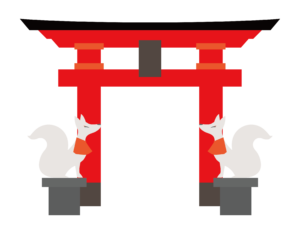
Over centuries, as these beliefs blended and spread, the image of the fox became stronger than that of Inari itself.
The white fox statues, the red torii gates, and even popular foods — all became symbols of this faith.
People began saying “let’s pray to the fox god,” not realizing the fox was the messenger — not the deity.
But that’s okay.
In Japan, religion and folklore often live together in harmony, and meanings naturally shift with time.
🍣 Inari Sushi — A Taste of Faith

One of the most familiar reminders of Inari worship can be found not at a shrine, but on your dining table.
Inari sushi (いなり寿司) is sushi rice wrapped in a sweet, deep-fried tofu pouch.
The dish is said to have been created as an offering to the Inari deity, since fried tofu (aburaage) was believed to be the fox’s favorite food.
Why tofu?
Because Inari is a god of agriculture — plant-based foods were seen as pure and appropriate offerings.
The golden color of fried tofu also symbolized prosperity and good harvest.
Over time, people started calling these tofu-wrapped sushi “Inari sushi,” turning sacred offerings into a beloved everyday food.
🍜 Kitsune Udon — The Fox in Your Bowl
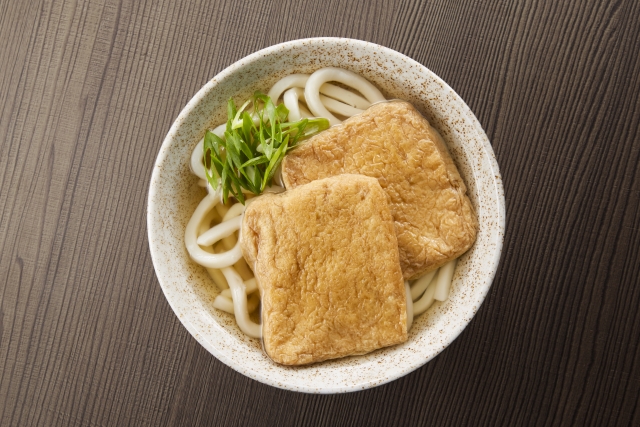
Another example is kitsune udon — literally “fox udon.”
It’s a bowl of thick noodles topped with a sheet of sweet fried tofu.
The name comes from the same folk belief: foxes love fried tofu.
So, a bowl of udon with tofu on top naturally became “fox udon.”
Like Inari sushi, this humble dish reflects how spiritual traditions quietly shaped Japan’s food culture.
Even in a simple lunch, you can still taste a bit of Shinto heritage.
🌾 From Shrines to Daily Life
Whether through a fox statue guarding a shrine or a bowl of kitsune udon at lunch,
the spirit of Inari continues to live in Japanese daily life.
When people visit shrines, eat Inari sushi, or pass through a red torii gate,
they’re unknowingly connecting to centuries of gratitude for rice, harvest, and prosperity.
So next time you see a fox — whether in stone or in soy — remember:
it’s not just a cute animal, but a messenger carrying Japan’s ancient wishes for abundance.
